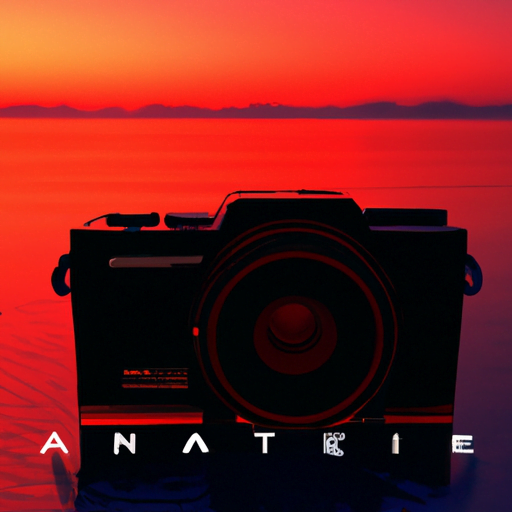
-
Table of Contents
Innovative Techniques for Creating Realistic 3D Renderings

With the rapid advancement of technology, the field of 3D rendering has seen significant growth in recent years. From architectural visualizations to product designs, realistic 3D renderings have become an essential tool for various industries. However, achieving a high level of realism in 3D renderings requires innovative techniques and a deep understanding of the principles of light, texture, and composition. In this article, we will explore some of the most effective techniques used by professionals to create stunning and lifelike 3D renderings.
1. Photorealistic Lighting
Lighting plays a crucial role in creating realistic 3D renderings. By accurately simulating the behavior of light in a virtual environment, artists can achieve stunning results that closely resemble real-world lighting conditions. One innovative technique used by professionals is the use of physically-based rendering (PBR) engines.
PBR engines, such as Arnold, V-Ray, and Corona Renderer, simulate the interaction of light with materials based on their physical properties. This allows artists to achieve accurate reflections, refractions, and shadows, resulting in highly realistic renderings. By using PBR engines, artists can create renderings that are indistinguishable from photographs.
2. Advanced Material Creation
Creating realistic materials is another crucial aspect of achieving lifelike 3D renderings. In the past, artists had to rely on manually tweaking material parameters to achieve the desired look. However, with the advent of procedural texturing and material libraries, the process has become much more efficient and realistic.
Procedural texturing allows artists to create complex materials by defining mathematical algorithms that generate patterns and textures. This technique enables the creation of materials with intricate details, such as wood grains, fabric weaves, and natural patterns. By using procedural texturing, artists can achieve a high level of realism without the need for manual tweaking.
Furthermore, the use of material libraries, such as Substance Designer and Quixel Megascans, provides artists with a vast collection of pre-made materials that can be easily applied to 3D models. These libraries contain scanned real-world materials, allowing artists to achieve an unprecedented level of realism in their renderings.
3. Accurate Camera Simulation
Simulating the behavior of a real camera is essential for creating realistic 3D renderings. By accurately replicating the characteristics of different camera lenses, artists can achieve effects such as depth of field, motion blur, and lens distortion.
One innovative technique used by professionals is the use of lens emulators, such as the Lens Effects plugin in Autodesk Maya. These emulators accurately replicate the characteristics of various camera lenses, allowing artists to achieve realistic depth of field and lens distortion effects. By using lens emulators, artists can add an extra layer of realism to their renderings.
4. Procedural Modeling and Sculpting
Creating realistic 3D models is a challenging task that requires a high level of skill and attention to detail. Traditionally, artists had to manually model and sculpt every detail of a 3D model, which was a time-consuming process. However, with the advent of procedural modeling and sculpting techniques, the process has become much more efficient and realistic.
Procedural modeling allows artists to create complex 3D models by defining a set of rules and parameters. This technique enables the generation of intricate details, such as foliage, rocks, and architectural elements, with minimal effort. By using procedural modeling, artists can create realistic environments and objects in a fraction of the time.
Similarly, procedural sculpting techniques, such as ZBrush’s DynaMesh and Blender’s Sculpt Mode, allow artists to sculpt organic shapes and intricate details with ease. These techniques enable artists to create lifelike characters and creatures that were previously challenging to achieve.
5. Real-time Rendering
Real-time rendering has revolutionized the field of 3D rendering by allowing artists to interact with their scenes in real-time. This technique is particularly useful for architectural visualizations and virtual reality applications, where the ability to explore and navigate a 3D environment in real-time is essential.
Real-time rendering engines, such as Unreal Engine and Unity, utilize advanced algorithms and hardware acceleration to achieve real-time rendering. These engines allow artists to make instant changes to their scenes and see the results in real-time, greatly speeding up the iteration process.
Summary
Creating realistic 3D renderings requires a combination of innovative techniques and a deep understanding of the principles of light, texture, and composition. By utilizing photorealistic lighting, advanced material creation, accurate camera simulation, procedural modeling and sculpting, and real-time rendering, artists can achieve stunning and lifelike 3D renderings that are indistinguishable from photographs.
As technology continues to advance, we can expect even more innovative techniques to emerge, further pushing the boundaries of realism in 3D renderings. Whether it’s architectural visualizations, product designs, or virtual reality experiences, realistic 3D renderings will continue to play a vital role in various industries.
